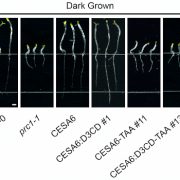
Cellulose synthase-like D (CSLD) 3 protein is a beta-1,4-glucan synthase
Research, The Plant Cell: In a NutshellYang et al. probe the biosynthetic activity of a protein involved in cell wall deposition.
Plant Cell https://doi.org/10.1105/tpc.19.00637
Jiyuan Yang, Erik Nielsen. Department of Molecular, Cellular, and Developmental Biology, University of Michigan, Ann Arbor, MI 48109, USA
Background:…

How Light Activates the Plant Circadian Clock
Research, The Plant Cell, The Plant Cell: In a NutshellLiu et al. discover how members of the photosensory-signaling pathway orchestrate circadian clock gene expression to regulate plant responses to daily changes in the light environment. Plant Cell https://doi.org/10.1105/tpc.19.00981
Background: Plants use an endogenous time-keeping mechanism known…
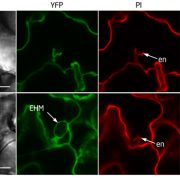
Plant Pathogens Recruit PI(4,5)P2 to the Interfacial Membrane for Disease Development
Blog, Research, The Plant Cell, The Plant Cell: In a NutshellQin et al. show that PI(4,5)P2 functions as a susceptibility factor for plant disease. Plant Cell https://doi.org/10.1105/tpc.19.00970
By Li Qin and Yangdou Wei. Department of Biology, University of Saskatchewan, Canada
Background: Biotrophic plant pathogens such as powdery mildews and rusts require…
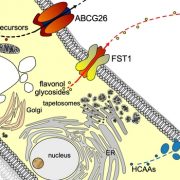
Pollen surface replenished: a tapetal flavonoid transporter
Research, The Plant Cell, The Plant Cell: In a NutshellGrunewald et al. identify a flavonoid transporter required for the deposition of flavonol-b-1,2-linked diglycosides to the outer pollen wall in Arabidopsis thaliana. The Plant Cell (2020) https://doi.org/10.1105/tpc.19.00801
By Stephan Grunewald and Thomas Vogt, Leibniz Institute of Plant Biochemistry,…
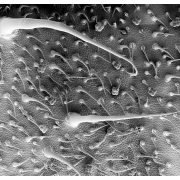
Tools to unravel the mystery of why some tomatoes are hairier than others
Research, The Plant Cell, The Plant Cell: In a NutshellGaldon-Armero et al. present an image resource that can be used to identify natural variation in leaf epidermal development in tomato. The Plant Cell (2020). https://doi.org/10.1105/tpc.20.00127
By Javier Galdon-Armero and Cathie Martin, John Innes Centre, Norwich, UK
Background: Just like our…
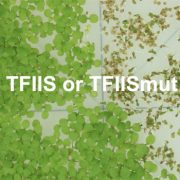
RNA polymerase II transcription: cleave to elongate
Research, The Plant Cell, The Plant Cell: In a NutshellAntosz et al. show that the ability of RNA polymerase II to cleave transcripts is required for proper transcription and plant growth.
Wojciech Antosz and Klaus Grasser, University of Regensburg
https://doi.org/10.1105/tpc.19.00891
Background: In plants as in other eukaryotes, nuclear…

Phosphorus sensing in Chlamydomonas by TORC1 subunit LST8
Research, The Plant Cell, The Plant Cell: In a NutshellCouso et al. developed a TOR kinase assay for Chlamydomonas and show how subunit LST8 senses phosphorus availability and modulates cell growth. Plant Cell https://doi.org/10.1105/tpc.19.00179
By I. Couso, M.E. Pérez-Pérez, M.M. Ford, E. Martínez-Force, L.M. Hicks, J.G. Umen, and J.L. Crespo.
Background:…
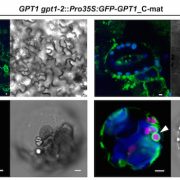
The Arabidopsis GPT1 transporter is Essential in Both Plastids and Peroxisomes
Research, The Plant Cell, The Plant Cell: In a NutshellBaune et al. explore the roles of a metabolite transporter in two different locations in a single cell. Plant Cell https://doi.org/10.1105/tpc.19.00959
By Marie-Christin Baune, Hannes Lansing, Antje von Schaewen
University of Münster, Germany
Background: The oxidative pentose-phosphate…
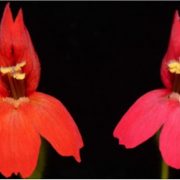
Regulation of Carotenoid Pigmentation in Flowers
Research, The Plant Cell, The Plant Cell: In a NutshellStanley et al. Identify a protein in the model plant monkeyflower (Mimulus) required for chromoplast development and carotenoid biosynthesis. Plant Cell https://doi.org/10.1105/tpc.19.00755
By Lauren Stanley and Yao-Wu Yuan, University of Connecticut
Background: Carotenoids are yellow, orange,…

